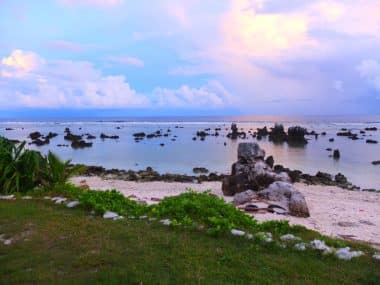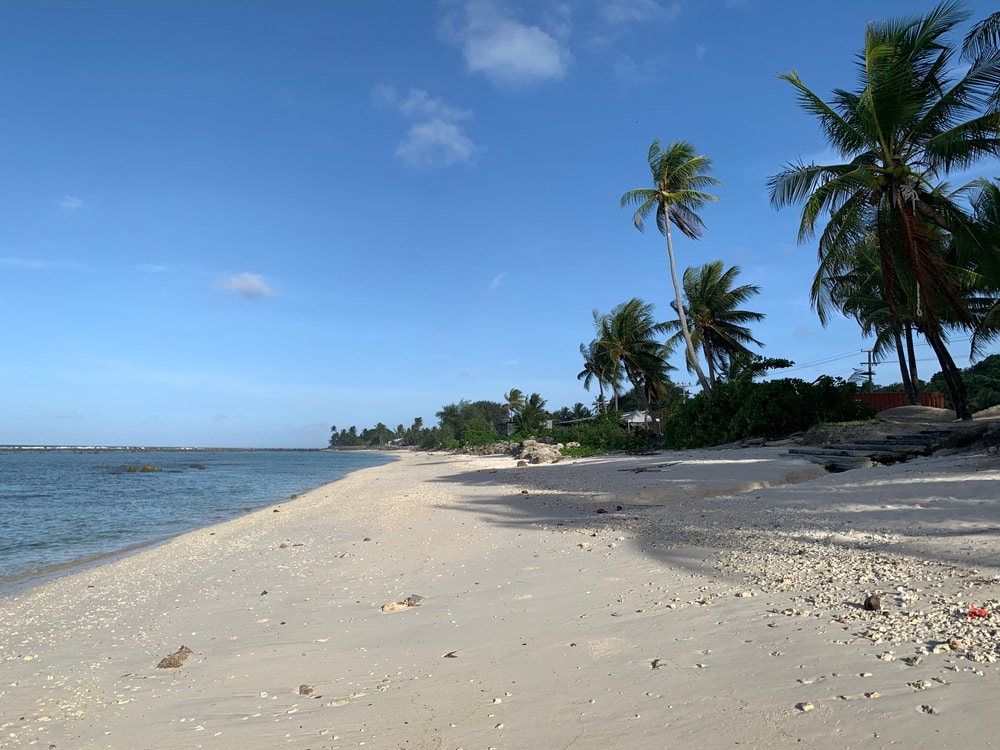Dreamlike beach idyll, breathtaking diving areas and lots of holiday flair: that’s Nauru. Despite its numerous advantages, the island state in the middle of the Pacific Ocean is still a real insider tip for tourists. Away from the big tourist crowds, you can enjoy a dream holiday with all the trimmings on Nauru, the only Pacific island in Oceania and the third smallest country in the world. There are only about 13,000 inhabitants living on Nauru.
The entire island, which is only 21.3 square kilometers in size, can be explored in just one day. Nauru does not have an official capital, but the political center is located in the district of Yaren in the southwest of the island state. In addition to the numerous political authorities, the metropolis of 5,000 inhabitants is also home to the International Airport of the Republic of Nauru. A leisurely stroll through Yaren is definitely worthwhile. In addition to the parliament building, which is well worth seeing, you should definitely take a look at the impressive harbor. Right next to Nauru International Airport is the Moqua Well. The approximately 2,000 square meter underground freshwater lake is located in a small cave a few meters underground. The lake offers both locals and tourists a welcome cooling, especially in the hot midday hours.
A paradise for divers and snorkelers

Divers and snorkelers from all over the world in particular have long since discovered Nauru for themselves in recent decades. No wonder: after all, the island is famous for its large and extremely colorful coral reefs and numerous small and large sea creatures. The reefs are among the most beautiful diving areas in the entire region – and that away from the big tourist strongholds of the Pacific. One of the most popular destinations on Nauru is Anibare Bay in the east of the island. The region is also the tourist center of the small state.
Water sports enthusiasts get their money’s worth here, as do beach holidaymakers and those seeking relaxation from all over the world. However, in addition to the dangerous jellyfish, you should also be careful of the unpredictable underwater current. For some years now, there has also been a seaport in Anibare Bay, which attracts many tourists in addition to the locals. In the west of the island state is another attraction, the Command Ridge. The highest point on the island with a height of 65 meters played a strategically important role for the Japanese army that occupied Nauru during the Second World War, especially during the Second World War. Even today, there are some remains of the various bunkers to be seen here. In addition, you can enjoy a nice overview of the entire island from here. Amateur golfers can also look forward to an 18-hole golf course.
Center of phosphate mining
In recent decades, Nauru has also been known as an important centre of phosphate mining. Due to the rich phosphate deposits on the island, Naura, which gained independence in 1968, was the country with the highest per capita income in the world until the end of the 1990s. From 2000 onwards, however, the deposits gradually ran out, so that significantly less phosphate is currently mined and thus poverty is becoming more and more rampant. In recent years, tourism has been discovered more and more as another important economic pillar for Nauru. Years of phosphate mining have created lunar landscapes all over the island. Today, these can be explored either on your own or with an expert guide. Due to the long-term phosphate mining on the entire island, there is a rather sparse flora and fauna on Nauru – especially inland. Only in the coastal regions can typical Pacific island plants such as coconut palms, banana trees or hibiscus be found. Large land animals are not found on Nauru. On the other hand, you will definitely find what you are looking for when looking for birds. Among other things, there are seabirds such as terns, gannets or shearwaters.
Best time to visit Nauru: from March to October
The weather on Nauru is characterized by a tropical climate with warm temperatures and high humidity of 75 percent on average. Rainfall is to be expected almost daily. The best time to travel to Nauru is from March to October. In these months, it actually rains relatively rarely. The average temperatures are just under 30 degrees Celsius. The dry trade winds make the weather even more pleasant. In the winter months, on the other hand, numerous heavy rainfalls are to be expected. Especially in the coastal regions, there are numerous accommodations to be found – from luxury hotels to various small holiday apartments to an inexpensive hostel.


